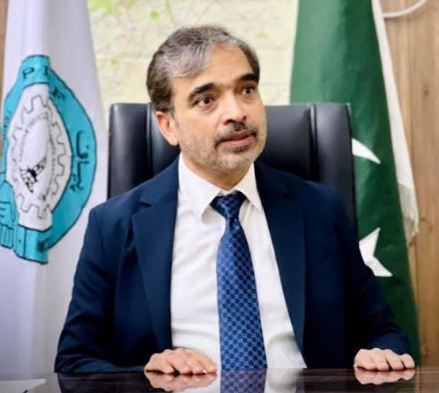ISLAMABAD, Feb 16, /DNA/ – The Pakistan Industrial and Traders Associations Front (PIAF) on Sunday observed that power sector has long been afflicted by gross inefficiency, huge losses, and unstable finances, stressing the need for its restructuring of its debt, long-term reforms and privatization, as the experts have revised economic growth projection downward to 3% for fiscal year 2025, reducing its earlier estimate of 3.2%.
PIAF Chairman Faheemur Rehman Saigol, in a joint statement along with senior vice chairman Nasrullah Mughal and vice chairman Tahir Manzoor Chaudhary said that long-term reforms of the power sector was crucial for improving operational effectiveness, and lessening the financial strain on the government.
Faheem Saigol said that DISCOs and GECOs in the country’s energy sector have historically experienced problems with bad management, corruption and inefficiency. He pointed out that privatization would introduce new resources, know-how, and creative approaches that are frequently absent in government-run entities. Private businesses would enhance customer service, streamline processes, and use better technology, which could result in a more reliable power supply and lower energy losses.
Nasrullah Mughal said that investors would provide funds to the sector, which can be utilized to expand the grid, enhance service quality, and upgrade infrastructure. In a country where infrastructure is aging and in dire need of up-gradation, this infusion of capital is essential. Furthermore, private organizations are good at controlling operating expenses and meeting consumer needs, which can lead to more effective and efficient services.”
Tahir Manzoor Chaudhary highlighted that privatization was not without its challenges, as the equity and access are issues, particularly in rural or underdeveloped areas, where private companies might be less likely to make investments. It is vital to ensure that privatisation does not result in higher energy bills for end users.
He suggested that strong regulatory frameworks were necessary to stop monopolistic behavior and safeguard the interests of the broader public. The need to ensure that all residents have access to reasonably priced power must be balanced with the government’s pursuit of efficiency.
The PIAF leaders said that owing to years of operational inefficiencies, poor management, and financial losses, the power sector was heavily indebted. Due to financial limitations, this debt creates a vicious cycle that exacerbates existing inefficiencies and strains finances further by preventing investment in up-gradation.
They explained that structural changes were necessary in the long run to ensure that the sector becomes financially viable. This entails enhancing revenue collection, cutting down on losses, and implementing effective operational procedures. They pointed out that the effective execution of these methods was contingent upon robust governance and open procedures. The issues facing the power sector are not only financial but also managerial. Mismanagement and corruption have been major roadblocks to progress.
Faheem Saigol suggested that to ensure accountability and stop financial mismanagement, any plan for privatisation or debt restructuring needs to be supported by stringent oversight procedures. “Gaining the public’s trust and support requires openness in the decision-making process and clear communication with stakeholders.”
The PIAF Chief said that financial institutions and development partners could offer best practices, financial support, and technical help to steer the privatisation and debt restructuring processes. Their participation would help the reforms gain more traction and draw in more funding. The government must, however, make sure that this support advances sustainable development objectives and is in line with national interests.”
It is to be noted that the reports have forecast a 4% growth rate for Pakistan in fiscal year 2026. The State Bank of Pakistan has projected real GDP growth in the range of 2.5% to 3.5% for the ongoing fiscal year.
The report anticipates global headline inflation to decline to 4.2% in 2025 and further to 3.5% in 2026. However, inflation is expected to return to target levels sooner in advanced economies compared to emerging markets and developing countries.
The report underscores the need for policies that balance inflation control and real economic activity, rebuild economic buffers, and boost long-term growth through structural reforms and enhanced multilateral cooperation.

















